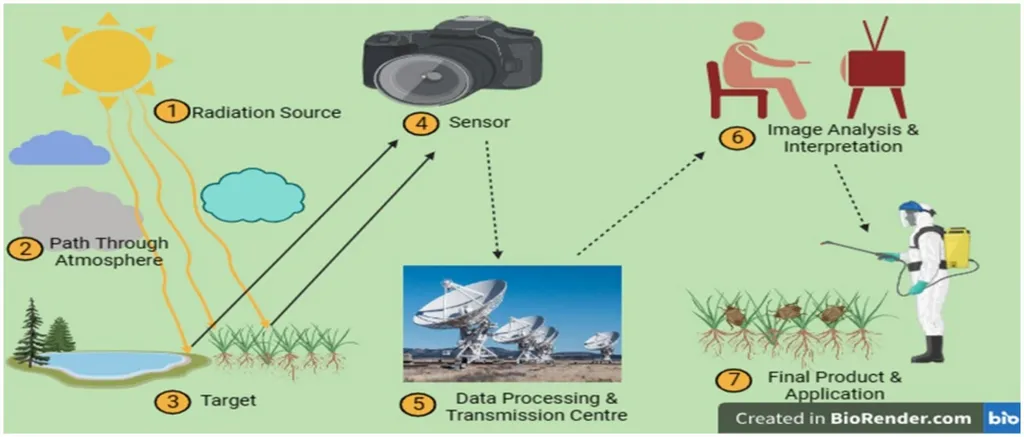In the heart of Saudi Arabia, a groundbreaking study is set to revolutionize the way we approach pest management in agriculture. Dr. Amal Alshardan, a distinguished researcher from the Department of Computer Sciences at Princess Nourah bint Abdulrahman University (PNU), has developed an innovative model that promises to enhance food production and secure our food supplies. Her research, published in the prestigious journal Scientific Reports, introduces the Insect Pest Recognition Model for Enhancing Food Production Using a Heuristic Optimiser and Fusion Transfer Learning (IPRMEFP-HOFTL), a sophisticated AI-driven system designed to detect plant diseases and pests with remarkable accuracy.
The global food supply chain is under constant threat from malignant plant pests and diseases, which can lead to significant losses in crop yield and quality. Traditional methods of pest detection are often labor-intensive and time-consuming, making them inefficient for monitoring vast agricultural fields. Dr. Alshardan’s model addresses these challenges by leveraging the power of artificial intelligence, wireless communication, and information technologies to create a smart farming solution.
“The IPRMEFP-HOFTL model is a game-changer in the field of sustainable agriculture,” Dr. Alshardan explains. “It uses a combination of advanced techniques, including Wiener filtering for image pre-processing, fusion models like CapsNet and Xception for feature extraction, and a denoising autoencoder-long short-term memory (DAE-LSTM) method for classification. This multi-faceted approach allows for highly accurate and automated detection of plant diseases and pests.”
One of the standout features of the IPRMEFP-HOFTL model is its use of a multi-objective remora optimization algorithm (MOROA) for hyperparameter selection. This optimization process ensures that the model’s detection outcomes are as precise as possible, making it a reliable tool for farmers and agricultural professionals.
The implications of this research are far-reaching. By enabling early and accurate detection of plant diseases and pests, the IPRMEFP-HOFTL model can help prevent crop losses and improve food production. This is particularly crucial in the context of global population growth and the increasing demand for sustainable food supplies.
Dr. Alshardan’s work also highlights the potential of AI and machine learning in transforming traditional industries. “The integration of AI technologies in agriculture is not just about efficiency; it’s about creating a more sustainable and resilient food system,” she notes. “This research opens up new possibilities for smart farming solutions that can adapt to changing environmental conditions and mitigate the impacts of climate change.”
The commercial impacts of this research are significant. For the energy sector, which is closely linked to agricultural practices, the IPRMEFP-HOFTL model offers a more efficient and sustainable approach to crop management. By reducing the need for chemical pesticides and fertilizers, the model can contribute to lower energy consumption and a smaller carbon footprint.
As we look to the future, Dr. Alshardan’s research paves the way for further advancements in AI-driven agricultural solutions. The potential for integrating IoT devices, drones, and other smart technologies into the IPRMEFP-HOFTL model could lead to even more sophisticated and scalable farming systems.
In conclusion, Dr. Amal Alshardan’s innovative research represents a significant step forward in the field of sustainable agriculture. Her work not only addresses critical challenges in pest management but also demonstrates the transformative power of AI and machine learning in creating a more efficient and resilient food system. As published in Scientific Reports, this study is a testament to the potential of interdisciplinary research in driving technological advancements and shaping the future of agriculture.

